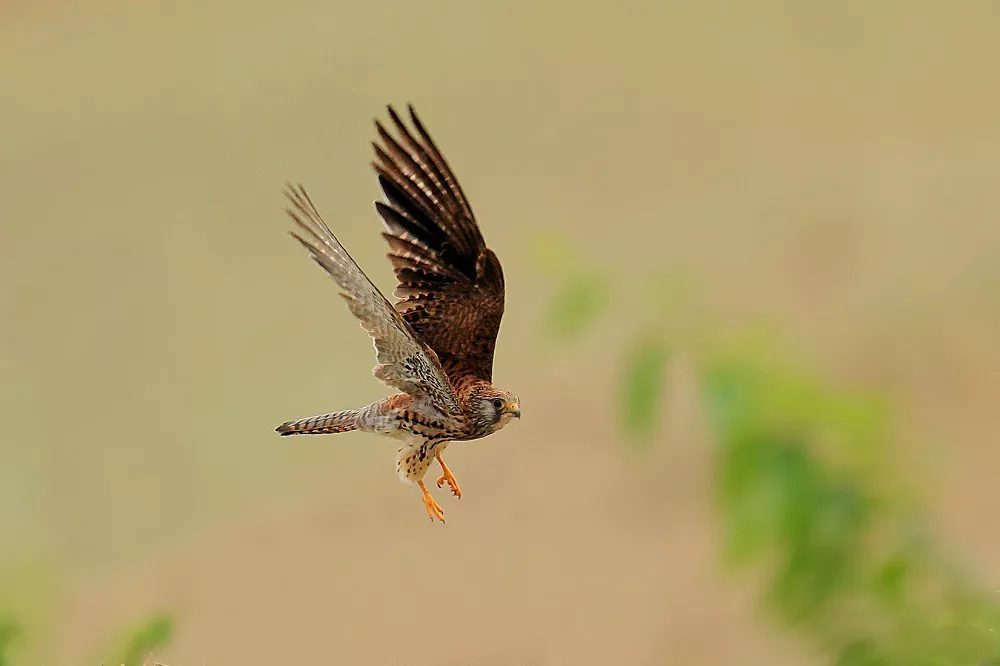The Lesser Kestrel (Falco naumanni) is a captivating bird of prey that belongs to the Falconidae family. With its agile flight, striking appearance, and unique behaviors, the Lesser Kestrel has captured the attention of bird enthusiasts and conservationists alike. In this article, we will explore the key characteristics, habitat, behavior, and conservation status of the Lesser Kestrel, shedding light on its significance in the avian world.
Physical Characteristics:
The Lesser Kestrel exhibits distinct features that set it apart:
Size: Compared to other kestrel species, the Lesser Kestrel is relatively small, measuring approximately 27-33 centimeters (11-13 inches) in length with a wingspan of 63-72 centimeters (25-28 inches).
Plumage: Adult males display a bluish-gray head and wings, with a reddish-brown back and tail. Their underparts are pale with fine dark barring. Adult females, on the other hand, have a more uniform brownish coloration.
Distribution and Habitat:
The Lesser Kestrel is a migratory bird that breeds in Europe and parts of Asia, primarily in countries such as Spain, Portugal, Italy, Greece, Turkey, and some regions of Central Asia. It prefers open habitats, including grasslands, agricultural fields, steppe areas, and semi-deserts.
Behavior and Hunting Techniques:
Hunting Strategies: Lesser Kestrels are adept aerial hunters, relying on their swift flight and sharp eyesight to capture prey. They mainly feed on insects, such as grasshoppers, beetles, and locusts, which they catch mid-air or pick off the ground.
Colonial Nesting: Unlike many other raptors, Lesser Kestrels are known for their colonial nesting habits. They often gather in large colonies, nesting in cavities of buildings, cliffs, or trees. This social behavior allows for enhanced protection against predators and facilitates efficient communication within the colony.
Breeding and Conservation:
Breeding Behavior: During the breeding season, which typically occurs between March and July, Lesser Kestrels form monogamous pairs. They construct nests in cavities, using materials such as twigs, grass, feathers, and other available debris. The female lays a clutch of 3-6 eggs, which are incubated by both parents for about 28-31 days.
Conservation Status: The Lesser Kestrel is listed as a species of “Least Concern” on the IUCN Red List. However, habitat degradation, agricultural intensification, and the reduction of suitable nesting sites pose potential threats to their populations. Conservation efforts focus on preserving nesting sites, promoting sustainable agriculture practices, and raising awareness about the importance of their conservation.
Ecological Significance:
Pest Control: Lesser Kestrels play a crucial role in controlling insect populations, particularly agricultural pests. By preying on insects, they contribute to the ecological balance and help reduce the need for chemical pesticides.
Indicator Species: The presence or absence of Lesser Kestrels in a given area can serve as an indicator of the health and quality of the ecosystem. Their presence reflects the availability of suitable prey and nesting habitats.
Conclusion:
The Lesser Kestrel, with its graceful flight, distinctive appearance, and remarkable behaviors, is a fascinating bird of prey native to Europe and parts of Asia. As we appreciate the unique characteristics and ecological role of this species, it reminds us of the importance of protecting and conserving our natural environments. By ensuring the preservation of suitable habitats and implementing sustainable practices, we can secure the future of the Lesser Kestrel and other avian species, contributing to the biodiversity and overall health of our planet.


 Facebook
Facebook  Instagram
Instagram  Youtube
Youtube 